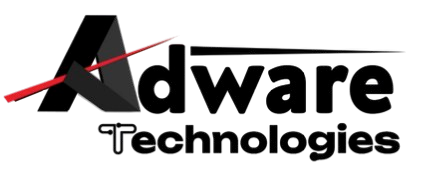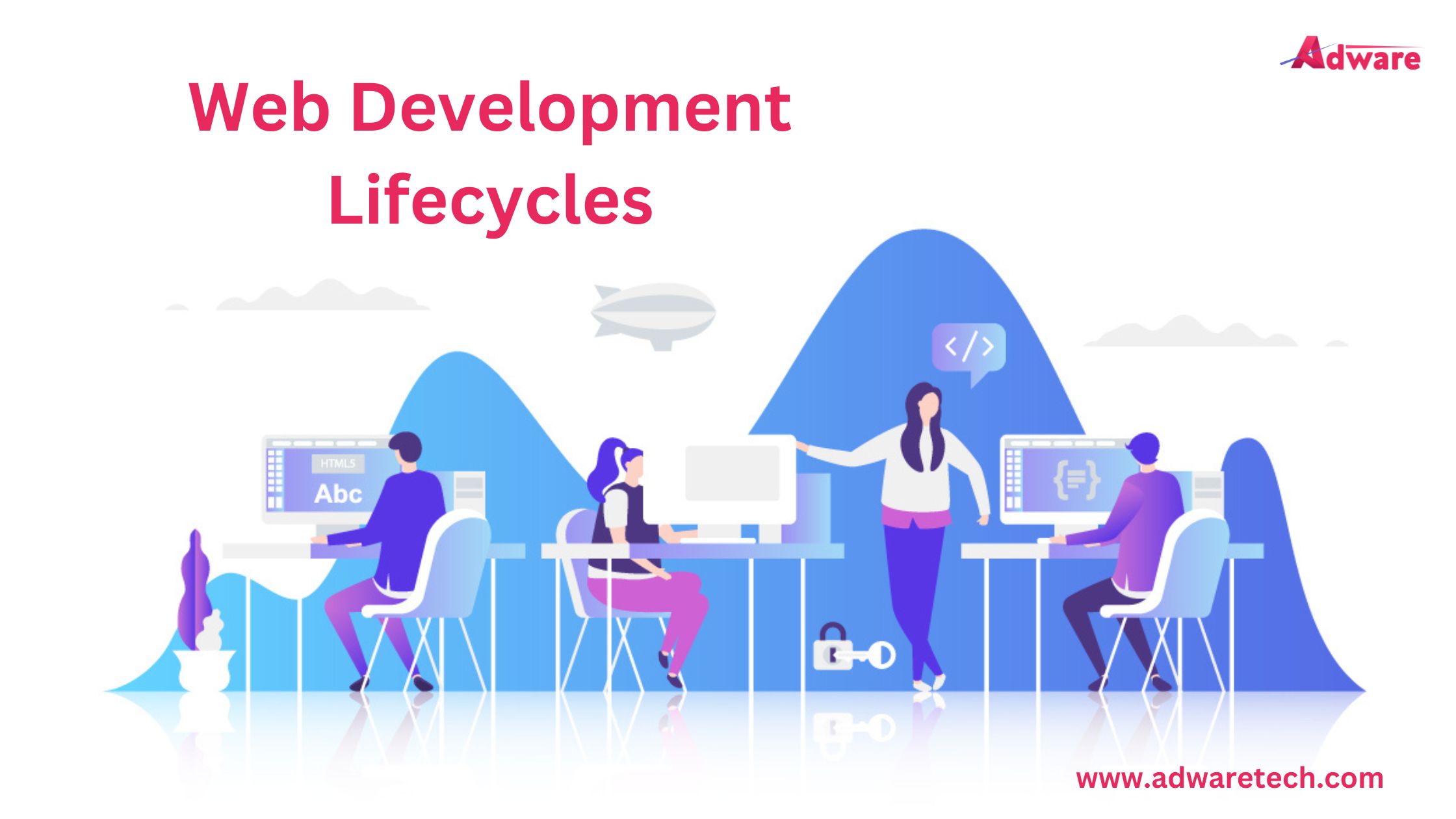Web development has become an integral part of modern business and communication. As technology continues to evolve, so does the approach to building websites and web applications. A structured and well-defined web development lifecycle is crucial for delivering successful projects on time and within budget. In this comprehensive guide, we'll delve into the various stages of web development lifecycles, highlighting their significance and key practices.
1. Requirements Gathering and Analysis:-
The first stage of any web development project involves understanding the client's needs and defining project goals. This process typically involves detailed discussions, interviews, and surveys to capture essential requirements. Developers and stakeholders work closely to create a clear scope of work, outlining features, functionalities, and design elements.
a). Understanding the Significance of Requirements Gathering and Analysis
Requirements gathering and analysis is the initial phase of the web development lifecycle, and its importance cannot be overstated. It establishes a strong foundation for the project by clarifying goals, objectives, and scope. This phase bridges the gap between the client's vision and the development team's technical expertise, ensuring that the final product meets user needs and business goals.
b). Key Steps in Requirements Gathering
Stakeholder Engagement and Communication: Effective communication is paramount. Engage with stakeholders, including clients, end-users, marketing teams, and designers, to gather a holistic view of project requirements. Regular meetings, interviews, and workshops facilitate the exchange of ideas and expectations.
Defining Project Scope and Objectives: Clearly outline the scope of the project by identifying its boundaries, features, and functionalities. Establish specific, measurable, achievable, relevant, and time-bound (SMART) objectives to guide the project's direction.
User-Centered Approach: Gain a deep understanding of the target audience. Create user personas and conduct user surveys to identify user preferences, pain points, and behaviors. This approach ensures that the final product caters to user needs.
Functional and Non-Functional Requirements: Functional requirements define what the web application or website should do, such as specific features, user interactions, and workflows. Non-functional requirements address the performance, security, scalability, and usability aspects of the project.
c). Effective Strategies for Requirements Analysis
Requirement Prioritization: Collaborate with stakeholders to prioritize requirements based on their importance and impact. This helps in resource allocation and ensures that essential features are addressed early in the development process.
Feasibility Assessment: Evaluate the feasibility of each requirement in terms of technical constraints, time, and budget. Assess potential risks and challenges to manage expectations and prevent scope creep.
Prototyping and Visualization: Create wireframes, mockups, or prototypes to provide a visual representation of the project's design and functionality. Prototypes allow stakeholders to visualize the end product and provide feedback early in the process.
Continuous Feedback Loop: Maintain an iterative feedback loop with stakeholders throughout the analysis phase. Regularly validate and refine requirements based on feedback to ensure alignment and minimize misunderstandings.
d). Documentation and Clarity
Comprehensive documentation is a cornerstone of successful requirements gathering and analysis. Detailed documentation captures the gathered insights, scope definitions, prioritizations, and user stories. This documentation serves as a reference guide for the development team, ensuring that everyone is on the same page.
2. Planning and Design:-
Once the requirements are gathered and analyzed, the next step is planning and designing the web project. This phase involves creating wireframes, prototypes, and mockups to visualize the user interface and user experience. The design team works closely with developers to ensure that the final product aligns with the client's expectations and industry best practices.
a). Understanding the Significance of Planning and Design
The planning and design phase is the bridge that connects the project's initial vision with its practical implementation. It involves translating requirements and ideas into a concrete plan that outlines the structure, layout, and user experience of the web product. By establishing a robust plan, this phase ensures that the final product aligns seamlessly with user needs and business objectives.
b). Key Elements of Planning and Design
Project Scope Refinement: Build upon the requirements gathered in the previous phase. Further refine the project scope, outlining specific features, functionalities, and content that will be included in the web product.
Information Architecture: Organize the content and structure of the website or application. Develop a clear hierarchy of information, defining navigation pathways and categorization to enhance user experience and accessibility.
Wireframing and Prototyping: Create wireframes or prototypes that visually represent the layout and interaction flow of the web product. These visual aids provide a tangible representation for stakeholders to review and provide feedback.
Visual Design: Develop the visual identity of the web product, including color schemes, typography, and imagery. The design should align with the brand's identity and create a visually appealing and cohesive user interface.
c). Strategies for Effective Planning and Design
User-Centered Design: Place the user at the center of the design process. Understand user personas, goals, and behaviors to create an intuitive and user-friendly interface that caters to their needs.
Responsive and Mobile-Friendly Design: Design for various screen sizes and devices, ensuring a seamless experience across desktops, tablets, and smartphones. Responsive design enhances accessibility and user engagement.
Accessibility Considerations: Incorporate accessibility features to ensure that the web product is usable by individuals with disabilities. Adhere to accessibility standards and guidelines to provide an inclusive experience.
Iterative Approach: Embrace an iterative design process that involves regular feedback and refinement. Continuously iterate on wireframes and prototypes based on stakeholder input and changing requirements.
d). Documentation and Collaboration
Detailed documentation plays a crucial role in the planning and design phase. Document the project scope, wireframes, prototypes, and design elements to maintain a clear reference for the development team. Collaboration among designers, developers, and stakeholders is essential to ensure a cohesive and unified vision.
3. Development and Implementation:-
With a solid plan and design in place, developers start coding the web application or website. This phase involves selecting the appropriate technology stack, programming languages, and frameworks. Regular testing and quality assurance are essential to identify and address any issues that arise during the development process.
a). Embracing the Essence of Development and Implementation
Development and implementation mark the moment when abstract ideas and visual designs take tangible form. This phase is characterized by coding, programming, and integrating various components to create a fully functional web product. It is where the magic happens, translating blueprints into user experiences that engage, educate, and entertain.
b). Key Aspects of Development and Implementation
Technology Stack Selection: Choose appropriate programming languages, frameworks, libraries, and tools that align with project requirements and objectives. The technology stack forms the backbone of the web product's functionality and performance.
Front-End Development: Create the user interface and user experience by coding HTML, CSS, and JavaScript. Develop responsive designs that adapt seamlessly to different screen sizes and devices, ensuring a consistent experience across platforms.
Back-End Development: Build the server-side logic, databases, and APIs that power the web product's functionality. Implement business logic, data processing, and user authentication to enable dynamic interactions.
Integration and Testing: Integrate different components, modules, and third-party services to ensure seamless interactions. Conduct rigorous testing to identify and rectify bugs, glitches, and inconsistencies.
c). Strategies for Effective Development and Implementation
Modular Coding: Adopt a modular coding approach, breaking down the development into smaller, manageable components. This enhances code maintainability, reusability, and collaboration among team members.
Version Control: Utilize version control systems like Git to track changes, collaborate efficiently, and manage codebase updates. Version control ensures that the development process remains organized and transparent.
Continuous Integration and Deployment: Implement continuous integration (CI) and continuous deployment (CD) practices to automate testing and deployment processes. This ensures a consistent and reliable delivery pipeline.
Security Measures: Embed security practices into the development process to safeguard user data and prevent vulnerabilities. Implement encryption, authentication mechanisms, and secure coding practices to mitigate potential risks.
d). Documentation and Collaboration
Comprehensive documentation remains a vital component during the development and implementation phase. Document codebase, APIs, configurations, and integration details to facilitate knowledge sharing, troubleshooting, and future enhancements. Collaboration among developers, designers, and stakeholders fosters a cohesive development process.
4. Testing and Quality Assurance:-
Thorough testing is critical to ensuring a bug-free and user-friendly web product. This phase involves various types of testing, including functional, usability, compatibility, and performance testing. Identifying and addressing issues early in the development lifecycle saves time and resources in the long run.
a). Unveiling the Significance of Testing and Quality Assurance
Testing and quality assurance are the linchpins of delivering a polished and reliable web product. This phase validates that the development process aligns with requirements, mitigates potential risks, and guarantees user satisfaction. Thorough testing safeguards against errors enhances user trust, and fortifies the overall credibility of the web application or website.
b). Key Facets of Testing and Quality Assurance
Types of Testing: Engage in a multifaceted testing approach that encompasses various types, including functional, usability, compatibility, performance, security, and regression testing. Each type addresses specific aspects of the web product to ensure its robustness.
Functional Testing: Verify that all features and functionalities of the web product operate as intended. Test individual components, user interactions, and workflows to confirm their accuracy.
Usability Testing: Evaluate the user-friendliness and intuitiveness of the interface. Gather user feedback to identify any areas where the user experience could be improved.
Compatibility Testing: Ensure that the web product functions seamlessly across different browsers, devices, and operating systems. Validate responsiveness and consistent performance under various conditions.
Performance Testing: Assess the web product's speed, responsiveness, and scalability under different levels of user traffic. Performance testing helps optimize load times and enhance user satisfaction.
Security Testing: Conduct comprehensive security assessments to identify vulnerabilities, protect sensitive data, and fortify against potential cyber threats.
c). Strategies for Effective Testing and Quality Assurance
Automated Testing: Employ automated testing tools and scripts to streamline repetitive testing tasks, improve efficiency, and ensure consistent results. Automated testing also aids in catching regressions early.
Test Environments: Create dedicated testing environments that mirror the production environment. This ensures accurate testing without affecting the live web product.
Test Cases and Documentation: Develop detailed test cases and scripts that cover different scenarios and use cases. Thorough documentation facilitates the tracking and replication of testing procedures.
User Acceptance Testing (UAT): Engage stakeholders and end-users in user acceptance testing to validate that the web product meets their expectations and requirements.
d). Documentation and Collaboration
Detailed documentation remains a cornerstone of effective testing and quality assurance. Document test plans, test cases, test results, and any defects or issues uncovered during testing. Collaboration among testers, developers, and stakeholders ensures a unified understanding of testing goals and outcomes.
5. Deployment and Launch:-
Once the web application or website passes all testing phases, it's ready for deployment. This involves configuring servers, databases, and other infrastructure components. A smooth deployment process ensures that the web product is accessible to users without any downtime or disruptions.
a). Unveiling the Importance of Deployment and Launch
Deployment and launch represent the realization of a vision into a functional reality. This phase transforms code, design, and testing efforts into a tangible digital experience for users. It's the moment when a web product is introduced to the world, and meticulous planning and execution are vital to ensure a seamless and successful launch.
b). Key Aspects of Deployment and Launch
Server Configuration: Prepare the production server environment, ensuring that it meets the technical requirements of the web application or website. Configure web servers, databases, and any necessary infrastructure.
Code Deployment: Transfer the developed code from the development environment to the production environment. This process involves version control, code repositories, and tools to ensure a smooth transition without disrupting user access.
Data Migration: If applicable, migrate any data from the development or staging environment to the production database. Validate data integrity and ensure that user data is accurately transferred.
Security Measures: Implement security measures to protect user data and safeguard against potential vulnerabilities. This includes setting up SSL certificates, firewalls, and access controls.
c). Strategies for Effective Deployment and Launch
Staging and Testing: Conduct thorough testing in a staging or pre-production environment to simulate the production environment. Test the web product's functionality, performance, and compatibility one last time before launch.
Rollback Plan: Develop a contingency plan for potential issues that may arise during deployment or after launch. This plan outlines steps to revert to the previous state if necessary.
Gradual Release: Consider a gradual release strategy, where the web product is initially launched to a limited audience before being made available to the general public. This approach helps identify and address issues in a controlled environment.
User Training and Documentation: If applicable, provide user training and documentation to guide users through the new web product's features and functionalities.
d). Documentation and Collaboration
Detailed documentation remains crucial during the deployment and launch phase. Document server configurations, deployment processes, and any changes made to ensure consistency and transparency. Collaboration among developers, system administrators, and stakeholders is essential to ensure a smooth deployment process.
6. Maintenance and Continuous Improvement:-
Web development lifecycles don't end with deployment; they extend into the maintenance phase. Regular updates, security patches, and improvements are necessary to keep the web product relevant and functional. Gathering user feedback and analytics helps identify areas for enhancement.
a). Understanding the Essence of Maintenance and Continuous Improvement
Maintenance and continuous improvement are the guardians of a web product's longevity and effectiveness. This phase involves monitoring, updating, and enhancing the web application or website to adapt to changing user needs, technological advancements, and industry trends. By proactively addressing issues and making strategic enhancements, development teams ensure that the digital experience remains fresh and impactful.
b). Key Elements of Maintenance and Continuous Improvement
Bug Fixes and Issue Resolution: Monitor user feedback, reports, and system logs to identify and address any bugs or issues that arise post-launch. Timely resolution contributes to a seamless user experience.
Security Updates: Regularly apply security patches and updates to safeguard the web product against emerging threats. Stay vigilant and proactive in addressing vulnerabilities.
Performance Optimization: Continuously monitor and optimize the web product's performance. Analyze load times, server response times, and other performance metrics to ensure a fast and responsive experience.
Content Management: Keep content up to date by adding new information, refreshing existing content, and removing outdated or irrelevant material. Maintain a dynamic and engaging user experience.
c). Strategies for Effective Maintenance and Continuous Improvement
Regular Audits: Conduct regular audits of the web product to identify areas for improvement. Perform code reviews, security audits, and usability assessments to ensure alignment with best practices.
User Feedback and Analytics: Leverage user feedback and analytics to gain insights into user behaviors and preferences. Use this data to guide decision-making for enhancements and optimizations.
Version Control and Documentation: Continue to use version control to track changes and maintain a well-documented codebase. Documentation ensures a smooth transition for future updates and improvements.
Feature Enhancements: Based on user needs and business goals, introduce new features and functionalities that enhance the user experience and provide additional value.
d). Collaboration and Continuous Learning
Collaboration among developers, designers, content creators, and stakeholders remains crucial during the maintenance and continuous improvement phase. Cross-functional teamwork ensures that updates, improvements, and enhancements are implemented effectively.
Conclusion:-
A well-structured web development lifecycle is essential for delivering successful web projects that meet client expectations and user needs. By following a systematic approach, from requirements gathering to deployment and beyond, development teams can ensure that web applications and websites are functional, user-friendly, and aligned with the latest industry standards. Embracing best practices at each stage of the lifecycle contributes to the overall success of the project and enhances the user experience in the digital realm.
For more information: World-Class Web and Mobile Apps Development Company




Comments (0)